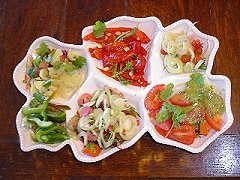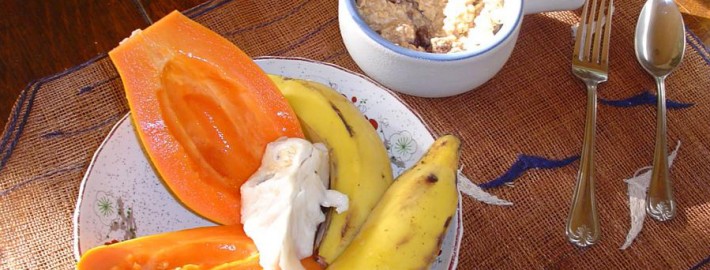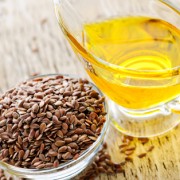The High Potassium, Low Sodium Diet of the Gerson Therapy
A Medical Application of the Ling Association-Induction Hypothesis
by Freeman Cope, MD
Physiol.Chem.Phys.1978; 10(5):465-468
The high potassium, low sodium diet of the Gerson therapy has been observed experimentally to cure many cases of advanced cancer in man, but the reason was not clear. Recent studies from the laboratory of Ling indicate that high potassium, low sodium environments can partially return damaged cell proteins to their normal undamaged configuration. Therefore, the damage in other tissues, induced by toxins and breakdown products from cancer, is probably partly repaired by the Gerson therapy through this mechanism.
 The Gerson cancer therapy is an integrated set of medical treatments which has cured many cases of advanced cancer in man. It was developed empirically by Gerson in the course of 30 years of clinical experimentation. Essentially, he tried many variations and combinations of treatments on cancer patients, always retaining that which was successful and discarding that which was not. Gradually he evolved an integrated pattern of treatment which cured many cases of advanced cancer, 50 of which are described in clinical detail in his book.
The Gerson cancer therapy is an integrated set of medical treatments which has cured many cases of advanced cancer in man. It was developed empirically by Gerson in the course of 30 years of clinical experimentation. Essentially, he tried many variations and combinations of treatments on cancer patients, always retaining that which was successful and discarding that which was not. Gradually he evolved an integrated pattern of treatment which cured many cases of advanced cancer, 50 of which are described in clinical detail in his book.
This empirically derived cancer therapy contained a number of unconventional features, which were justified by the fact that they did indeed cure advanced cancer. From the nature of the measures that gave good results, and from the laboratory medical science available at that time, Gerson attempted to deduce the reasons why his therapy was effective in curing cancer. His deductions led to some unconventional ideas regarding the nature of human cancer and the mechanisms of therapy. Some of his hypotheses were vaguely stated and incompletely validated, but they are of great importance because they imply that those approaches to cancer therapy that will be effective are mostly different from those now used.
This paper shows how modern work on cation association and water structuring in cells supports and makes more precise some of the deductions Gerson made from his medical experimentation with cancer patients.
An essential component of Gerson’s cancer therapy was the use of a low Na, high K diet. Indeed, he found experimentally that cancers regressed faster if large quantities of inorganic solutions of K were given in addition to a diet which was already high in K.
Gerson attempted to understand the biochemical and biophysical reasons for the observed success of low Na and high K diets in the cure of cancer. He recognized the importance of this question and devoted much space in his book to correlations with known experimental facts. He observed that cancer patients always had marked degeneration of other tissues, especially of the liver presumably due to toxic factors, of unknown type, produced by the cancer. Gerson observed that this situation became worse when medical treatments destroyed the cancer, which released toxic tissue breakdown products, which poisoned other tissues, which led to coma and death unless vigorous measures were taken to prevent this. Gerson noted that earlier investigators had shown that tissue damage due to administration of various poisons causes liver tissue to lose K and gain Na. Gerson also noted that when cancer patients were under treatment, they lose extra Na from the body in the urine, which implied that part of the process of recovery of the human body from cancer disease was replacement of excess Na by K in damaged tissues.
Gerson made the general deduction that a major part of the reason for the observed success of low Na, high K diets in treatment of cancer was that they forced a correction of the generalized tissue damage, of which low tissue K and high tissue Na were a part. It will now be shown that modern experimental evidence and concepts support and make more precise this conclusion.
Modern experimental evidence indicates that the cell should be regarded as analogous to an ion exchanger resin granule with structured water in the interstices and with potassium and sodium ions associated with fixed negative charges on the protein matrix. This line of investigation was initiated by Ling who called it the “association-induction hypothesis,” and was extended by others including Damadian, who used the terms “ion exchanger resin” and “cytotonus model” of the cell.
Tissue damage, from any cause and in any tissues, produces a similar set of changes in tissue salt and water, which Cope has called the “tissue damage syndrome.” This pattern is clearly shown in experiments by Ling and Ochsenfeld with muscle poisoned by iodoacetamide and has been discussed from the above point of view by Cope. The most easily observed components of the tissue damage syndrome, as seen in the experiments of LIng and Ochsenfeld, are decreased cell K, increased cell na, and increased cell water (cell swelling or tissue edema). The conceptual pattern responsible for these observed changes, conceived by Ling as part of his association-induction hypothesis, is as follows:
The proteins of the cell are able to exist in either of two different configurational states: a normal configuration, and a damaged configuration. The two different protein configurational states induce two different sets of water structuring and cation association states. In the healthy cell, the cell proteins have their normal configurational state in which negatively charged sites on the protein matrix have a large preference for association with K rather than Na, and cell water is highly structured so that its solubility for both K and Na is low. The result is high cell K and low cell Na concentrations. The ability of the cell proteins to stay in the normal configurational state is dependent on the integrity of the cell (freedom from chemical or physical damage).
In the damaged cell, the cell proteins change to the damaged configurational state. In that state the cell proteins lose their preference for association with K rather than Na, lose much of their ability to structure water, and probably lower their contractility, with the result that K leaves the cell, is replaced by Na, and the water content of the cell increases (the cell swells).
The high K, low Na diet of the Gerson cancer therapy is a logical strategy for improving the health of the body tissues, of which probaby all and certainly the liver are suffering from the tissue damage syndrome, some components of which were observed and recognized by Gerson earlier in this paper.
In the damaged or partly damaged cell, the cell proteins lose all or part of the preference of their sites for associating with K rather than Na. Nevertheless, a competition between k and Na for these sites still exists. Therefore if in the environment around the cell the concentration of K is increased compared to Na, the association sites are forced to accept more K and less Na because of the cooperative interactions between associated sites, as shown by Ling and Bohr. This tends to restore the normal configuration of the proteins. Therefore, treatment with the Gerson diet to increase tissue K+ concentration and to decrease tissue Na+ concentration is a logical therapy for the tissue damage syndrome in the cancer patient.
Also read about what to do, what steps to take if you have cancer.






